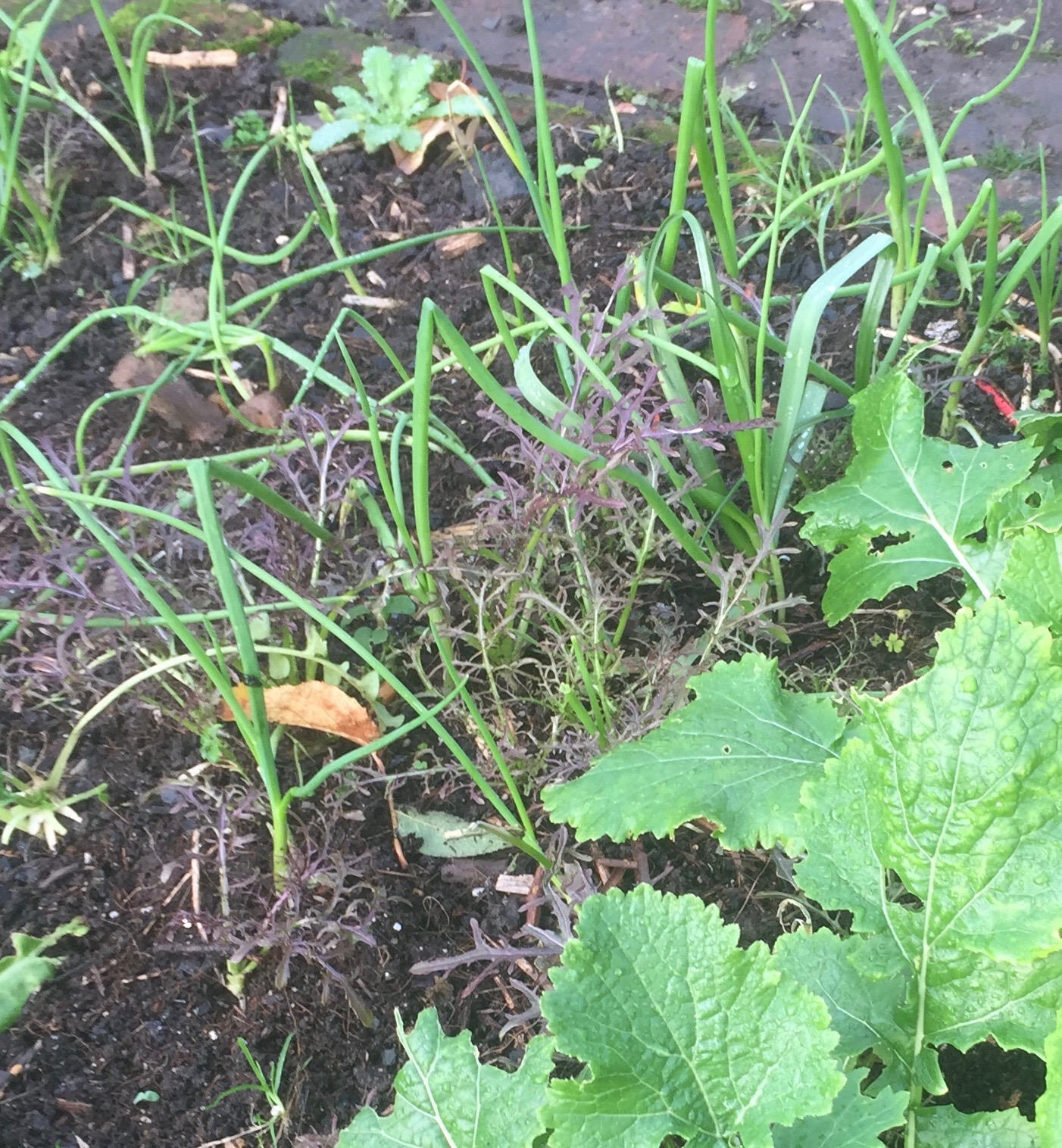This morning, for breakfast, I went into the garden with a couple of slices of bread slathered with mayonnaise and a rice cake smeared with Jersey butter. Then I proceeded to pick from my winter salad garden: lamb’s lettuce, French parsley, various Japanese winter veg including mizuna and two frilly but intensely hot mustardy greens, land cress (a thicket self seeded from a single plant earlier this year), lettuce, winter purslane and, for a touch of the bitters, artemisia – wormwood. I added a leaf of radicchio from plants that have sprung up through the brickwork of a path. Just as we think of ‘food miles’ there is a parallel concept of ‘food days’ from harvest to consumption. In this case it was ‘food seconds’ – the leaves barely knew they had been plucked before they disappeared into the welcoming warm darkness of my esophagus, still brimming with vitality as they headed for the acid bath of my stomach. The garden owes everything to Rocket Gardens Winter Salad Collection, a superb collection of cold-tolerant plants that were delivered to me back in September, to get established before the cold set in. They haven’t been tested by frost (well, a very light one a few weeks ago) but my experience has been that my biochar-rich soil has such an active biology that the warmth it gives off acts as underfloor central heating for the plants. Soil is everything and I am lucky to have Carbon Gold at my fingertips, continually discovering new aspects of the joys of biochar gardening.
But enough about the soil, it’s the variety that gets me every time I have my salad breakfast.
Here they are, sharing a plate with a buttered rice cake and the lamb’s lettuce growing just behind. But read on for the individual varietals and pictures.
Salad plate notated.jpg
Purslane.jpg
I love the light mucilaginousness of winter purslane, with its spade-shaped leaves that look like they’ve escaped from a deck of playing cards.
Then there are the red chicories – radicchio and rosso de Treviso, both squeezing through the brick path. These provide a crisp bitterness.
radicchio.png
The Japanese Red Frills Mustard leaves are hot and mustardy and satisfyingly crunchy. Here are the purple ones, finding space between the turnips and the spring onions.
IMG_1264 (1).jpg
And here are their green cousins, the Green Frills Mustard
Frilly Japanese greens.png
The land cress is easily as peppery as its aquatic cousin
cress.jpg
The Lamb’s Lettuce miraculously replaces removed leaves almost, it seems, overnight. Light in flavour and texture.
lamb\s lettuce.png
French parsley does the same, endlessly offering up new leaves to replace those plucked earlier. Here it is in the foreground, with emerging Babbington’s leeks just behind.
parsley.png
Mizuna rounds it out, though it seems to be struggling more with the cold than the others.
Mizuna.png
A dab of Artemisia is always a good digestive tonic, but very bitter, so I get that down first and then follow with the sweeter and more pungent leaves.
YUM!
eating breakfast.jpg





















